Destiny Blu-ray Movie
HomeDestiny Blu-ray Movie 
Der müde TodKino Lorber | 1921 | 98 min | Not rated | Aug 30, 2016
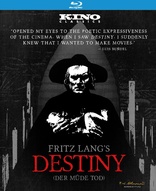
Movie rating
7.4 | / 10 |
Blu-ray rating
| Users | 0.0 | |
| Reviewer | 4.0 | |
| Overall | 4.0 |
Overview
Destiny (1921)
As a young couple stops and rests in a small village inn, the man is abducted by Death and is sequestered behind a huge doorless, windowless wall. The woman finds a mystic entrance and is met by Death, who tells her three separate stories set in exotic locales, all involving circumstances similar to hers. In each story, a woman, trying to save her lover from his ultimate tragic fate, fails. The young lady realizes the meaning of the tales and takes the only step she can to reunite herself with her lover...
Starring: Lil Dagover, Walter Janssen, Bernhard Goetzke, Hans Sternberg, Karl RückertDirector: Fritz Lang
| Foreign | 100% |
| Surreal | 8% |
| Mystery | 2% |
| Fantasy | Insignificant |
Specifications
Video
Video codec: MPEG-4 AVC
Video resolution: 1080p
Aspect ratio: 1.33:1
Original aspect ratio: 1.33:1
Audio
Music: LPCM 2.0 (48kHz, 16-bit)
Subtitles
English
Discs
Blu-ray Disc
Single disc (1 BD)
Playback
Region A (B, C untested)
Review
Rating summary
| Movie | 5.0 | |
| Video | 4.0 | |
| Audio | 3.5 | |
| Extras | 3.0 | |
| Overall | 4.0 |
Destiny Blu-ray Movie Review
Fritz Lang's first international breakthrough
Reviewed by Dr. Stephen Larson September 1, 2016With Der müde Tod (Destiny, 1921), Fritz Lang mounted one of the most revolutionary and influential works of the German Expressionist
movement. The film was a lavish Decla-Bioscop production co-scripted by Lang and his second wife, Thea von Harbou, who originally went
uncredited. The scenarists were aided by splendiferous set pieces by three highly talented art directors and a cadre of cinematographers.
Destiny is famous for introducing Luis Buñuel to the "poetic expressiveness" of cinema and convinced the Spanish surrealist to become a
filmmaker. Additionally, death in Destiny as both a recurrent theme and visual specter almost certainly caught Ingmar Bergman's attention
for the Swede used the character of Death to probe existential questions during the Black Plague in The Seventh Seal (1957). Lang's
depiction of a black figure entering a horse carriage and of ghosts and apparitions coming from across the countryside conjures aesthetic
similarities with Victor Sjöström's The Phantom Carriage, which was also released in 1921. In his commentary track on this disc, film critic
Tim Lucas discusses several other films that are indebted to Lang's work.
Destiny is a cinematic portamento comprised of six verses that present psalms and chansons before each vignette. The story begins in a
contemporary European rural town where an unnamed, blissful couple are engaged to be married. The young man (Walter Janssen) and young
woman (Lil Dagover) are accompanied to the Golden Unicorn, a local inn, by a tall, mysterious stranger (Bernhard Goetzke). The outsider carries a
staff with a tiny skeleton on the top masquerading the "Dance of Death." Suddenly, he places an hour glass on the table, signifying the time left on
earth for the young lad. The young lady is flummoxed to find her lover gone and goes searching for him. Meanwhile, the character of Death has
convinced the municipal council to allow him to erect a towering wall adjacent to the cemetery. After the woman encounters ghosts and spirits
approaching her by the wall, she meets an apothecarist or herbalist who gives her a vial of poison to drink in hopes that it will transport her to her
fiancé. Instead, the woman is sent to a long candle-shaped entrance that leads her to Death's domain. She meets the black-cloaked figure who
escorts her to a room filled with candles. Death proposes that she will have three chances (symbolized by the flickering candles) to go back in time
and save her future husband.
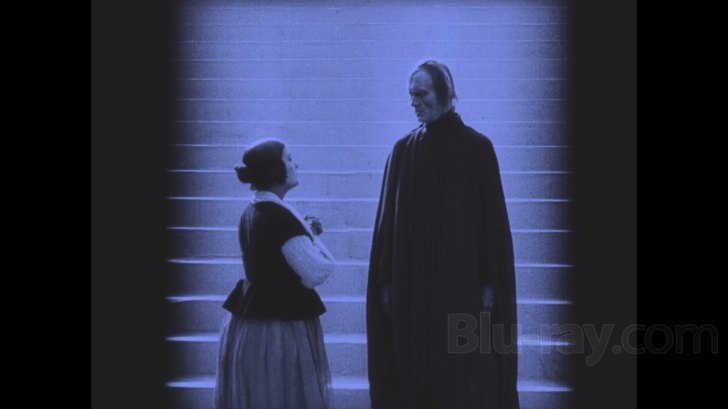
Oh, Death, grant thy wish that I be reunited with my lover.
Destiny reminds me of a Danish film made during the same period, Blade af Satans Bog (Leaves from Satan's Book, 1919–21). In this second feature directed by Carl Dreyer, Satan tempts humankind across four historical epochs: Jerusalem thirty years after the birth of Christ, the Spanish Inquisition, the French Revolution, and the contemporary civil war between the Russians and Finns. In each section, Satan disguises himself in a different costume and if a victim succumbs to his wishes, Satan receives punishment from God. Like Leaves from Satan's Book, Destiny contains four historical episodes: a modern parable, an Arabian tale set in ninth-century Baghdad, a Venetian tale set in the Italian Renaissance, and a nineteenth-century Chinese tale set in the Emperor's palace. Like Satan's multifaceted portrayals in the Dreyer film, the character of Death assumes various personas in each section. While the actor Bernhard Goetzke dons different garbs for each part, it is still fairly apparent to the audience that he does indeed embody Death since he maintains stone-faced and glum expressions. (His true identity is more ambiguous in the Venice scenes.) The young man and the young woman also assume different parts for each and their mutual survival is dependent upon plot predicaments that Death presents them. For example, if the lady fails a test, a candle wick is extinguished.
Lang's sets and art décor are put on dazzling display throughout Destiny. Lang demonstrates an infinitesimal grasp of every detail in the frame from the scrolls on Death's wall to the circular doorways around the Chinese Emperor's palace. Lang also experiments with the height and width of the image. In several shots, he uses a window shutters technique to isolate pictorial details in the center of the frame. Further, he masks the top and the bottom of the frame for wide shots, giving them a pre-CinemaScope appearance. For the early 1920s, Lang pushes the envelope for special effects, employing trick shots through duplicate photography and multiple superimpositions over a single image. Lang's stylized form syncs wells with his narrative conventions because he ingeniously crafts candle-like shapes out of walls and archways as well as various aesthetic motifs signifying death. While not as famous or well-known as his other silent films, Destiny stands out as an artistic peak in the German auteur's oeuvre.
Destiny Blu-ray Movie, Video Quality 
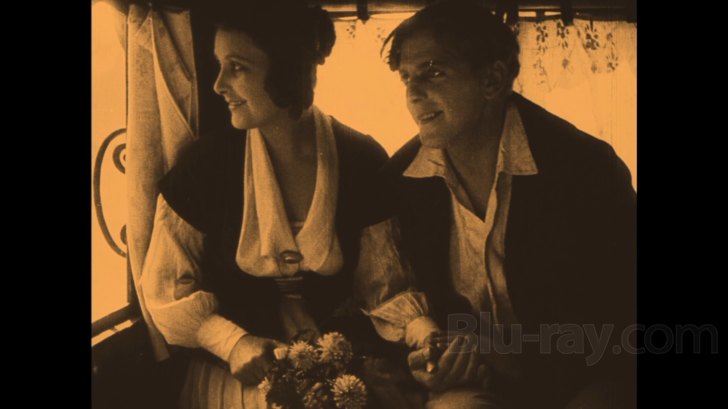
Destiny appears in an aspect ratio of 1.33:1 on this BD-50 courtesy of Kino Classics. The transfer is based on a 2K restoration supervised by
Anke Wilkening on behalf of the Friedrich-Wilhelm-Murnau-Stiftung. The presentation consists of a composite print culled from a variety of archival
film elements. It preserves the original German intertitles and simulates the historic color tinting and toning of its original premiere. According to
Berlinale Classics: "The material basis used for the digital restoration of the film is a 35mm black-and-white duplicate negative from the Museum of
Modern Art in New York City. Individual shots were taken from a black-and-white copy from the Cinémathèque de Toulouse. The intertitles are
reconstructions from the Munich Film Museum, using 'blitz titles' from a copy in the Gosfilmofond of Russia in Moscow as the foundation. Missing
titles were reconstructed and supplemented with the help of material from the Národní filmový archive, Prague and the Cinémathèque Royale,
Brussels. The lost film tints of individual scenes were simulated using contemporary distribution copies from other Decla productions from the same
period."
The overall quality of diverse material seen in this restored print can vary but the good news is that there are few prolonged damage marks left on
the images. There are a handful of shots or less that contain white, static vertical lines but none too substantial to distract the viewer from enjoying
Lang's aesthetics. Mostly white but some black speckles crop up on the intertitles and more work could have been done to remove them. Contrast is
very good for a ninety-five-year-old film. In the instances in which Lang inserts irises around the characters, low-level noise is kept to a minimum,
though it's more visible in the final verse around the young heroine. Luckily, Kino has mastered the film at a very high bitrate and the resolution
easily exceeds all prior video editions.
There are relatively large white English captions at the bottom of the intertitle cards. They are presented in a clear sans serif font. The captions are
optional.
For many years, the only DVD within public domain was a 1999 edition produced by David Shepard through his Blackhawk Films Collection and
distributed through Image Entertainment. This version was digitally mastered from a 35mm fine grain master of the French reissue version. (The film
received glowing reviews in Paris during its theatrical run there.) The images were done in color tints authentic to German films also released in
1921. Shepard created new English titles that were translated from the original German censor records and presented in type faces approximating
those in prints of the same period. In his audio essay, Tim Lucas criticizes Shepard's print implicitly, surmising that Destiny did not contain
any black-and-white imagery. In fairness to Shepard, there is no complete original negative or reference prints of Destiny that survive and
even the 2016 restoration contains B&W shots. The Image DVD is windowboxed, though, and appears cropped and muddy next to Kino's. There are
also some foxed corners on the DVD which have been all-but eliminated on the Blu-ray. Contrast is clearly superior on the Kino whereas faces are
very dark in long shots on the Image disc. The Kino has to be considered the best overall version.
Destiny Blu-ray Movie, Audio Quality 
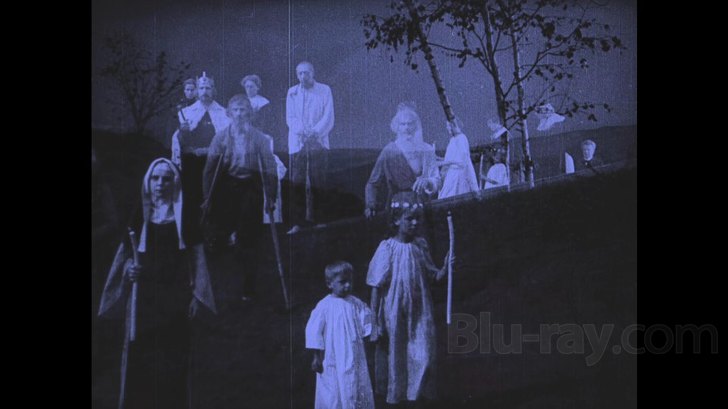
Kino presents a newly-composed score by Cornelius Schwehr as a commissioned composition by ZDF / ARTE and performed by the 70-member Berlin
Rundfunk Symphony Orchestra under the direction of conductor Frank Strobel. The music is rendered as LPCM 2.0 stereo and befits the film's diverse
sections quite well. Schwehr's score is instrument-specific depending on the film's time period and national setting. For example, he employs ethnic
percussion for the Chinese tale and brass (especially French horns) for the Venetian tale. The musical performance doesn't exhibit a lot of
dimensionality and space but it is a crisp presentation.
The Image DVD contained an orchestral score recorded in digital stereo by the Mont Alto Motion Picture Orchestra. Rodney Sauer compiled authentic
movie music arrangements of the period and German traditional tunes as indicated by the on-screen titles. Given that the Image disc presented
Destiny at roughly the same frame rate (totalling about 98 minutes), this would have made a great alternate track.
Destiny Blu-ray Movie, Special Features and Extras 
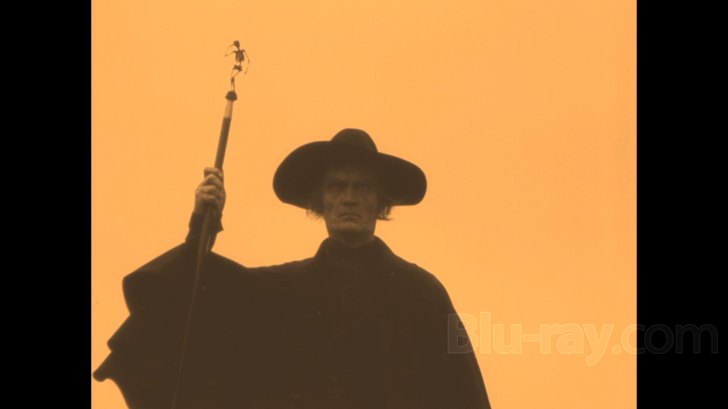
- Audio commentary by film historian Tim Lucas - The author of The Video Watchdog Book, Lucas is well-prepared for this track, having studied the film's critical reception and biographies of Lang. There are some gaps and Lucas's voice sounds a little nasal but he delivers an engaging discussion of Destiny and its cast/crew. Lucas's prose is rather academic at times but he never comes across as too dry.
- Restoration demonstration footage (15:36, 1080p) - Presents a side-by-side comparison of three different sequences from the film to illuminate variations in color tinting and toning.
- 2016 Re-release trailer (1:30, 1080p) - a new trailer that Kino put together to showcase Destiny's restoration and its limited theatrical re-release.
Destiny Blu-ray Movie, Overall Score and Recommendation 
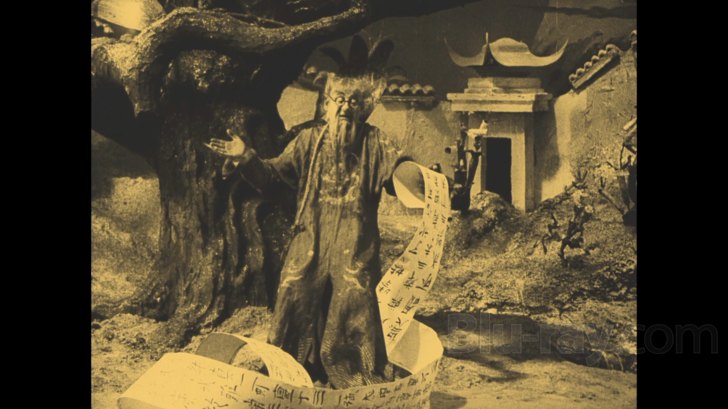
Stylistically innovative, Destiny is a remarkable omnibus film by Fritz Lang that should be venerated as a classic of German Expressionism. The composite print that Kino used in its 1080p presentation is quite good and the new score accompanying the film acts as a nice complementary backdrop. Kino's new bonus features are solid and provide a sufficient amount of context into its production history and restoration phases. The disc comes HIGHLY RECOMMENDED to movie collectors in North America. Even if Eureka releases its own edition in the UK, those who don't want to wait should indulge in Kino's fine package.
Similar titles
Similar titles you might also like

Four Around the Woman
1921

The Wandering Shadow
1920

Harakiri
1919

The Spiders
1919-1920

Spies
Spione
1928

Céline and Julie Go Boating
Céline et Julie vont en bateau: Phantom Ladies Over Paris
1974

Dr. Mabuse: The Gambler
Dr. Mabuse, der Spieler - Ein Bild der Zeit
1922

Woman in the Moon
Frau im Mond
1929

Die Nibelungen: Kriemhild's Revenge
Die Nibelungen: Kriemhilds Rache
1924

The Plague of Florence
Die Pest in Florenz
1919

Beauty and the Beast
La Belle et la Bête
2014

Sampo
The Day The Earth Froze / Slipcover in Original Pressing
1959

White Snake
白蛇:缘起 / Bái Shé: Yuán Qǐ
2019

The Wild Boys
Les garçons sauvages
2017

To Sleep So as to Dream
夢みるように眠りたい / Yumemiru yōni nemuritai
1986

House
ハウス / Hausu
1977

The Golem
Der Golem, wie er in die Welt kam
1920

The Silence
1998

Vampyr
1932

Waxworks
Das Wachsfigurenkabinett
1924